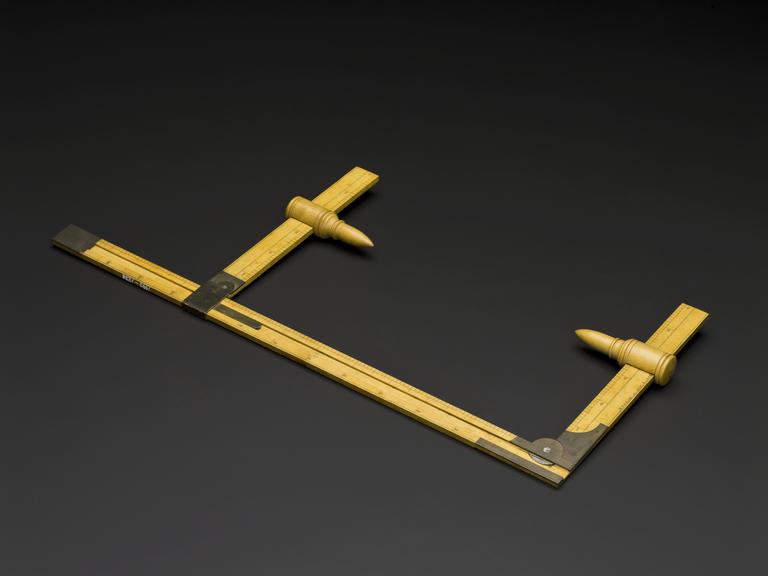We took a look at the Science Museum Group collection to see what we could learn about people’s “personal data” throughout history.
Thanks to this super helpful article from the International Association of Privacy Professionals (and with a name like that they should know their stuff), we learned that one of the earliest places people’s personal data was recorded was on their gravestones. This Roman sepulchral stone, more than 1,700 years old, was dedicated by the parents of a Roman called Theopropus. Almost as old, but slightly more cheerful, is this Greco-Roman marriage contract from around 250 CE, which also contains personal data about the bride and groom.

Science Museum Group © The Board of Trustees of the Science Museum
We generally think of our data as being our name, address and contact details—but how about your skull measurements? These 18th century callipers were used to measure women’s heads during craniological studies, after which doctors would decide if they had “criminal temperaments”. Certainly not the sort of data we’d like to be collected about us nowadays!
Far more conventional is this criminal record ledger compiled by the West Yorkshire police in 1901. All the recognisable elements of personal data—name, age and address, are here, along with a photograph.

Science Museum Group © The Board of Trustees of the Science Museum
A more poignant example of historic data collection comes from these First World War wound tags. Along with essential information needed to triage the injured, these tags would be marked with a soldier’s name or serial number, rank and regiment. A more modern example of military data collection is this US Navy Personal Information Carrier, which not only allows access to the holder’s medical history but also shows whether a sample of DNA has been preserved.
Our friends over at Tomorrow’s World are also thinking about data all this week as part of their My Life, My Data, #MyTomorrow campaign, which is designed to inspire people and communities to help shape the future by taking greater control of their personal data.
They’re encouraging people to get creative as they sign up as “data donors”, thinking about the real implications of GDPR. They’re asking “What will you do with these new rights?” and “Can you change the world by taking your data and giving it to causes you care about?”
By sharing their Data Donation card online, customised with the cause of your choosing, you can help share the message online—and you can be as serious or as tongue-in-cheek as you like!